
views
Making It Fun and Easy
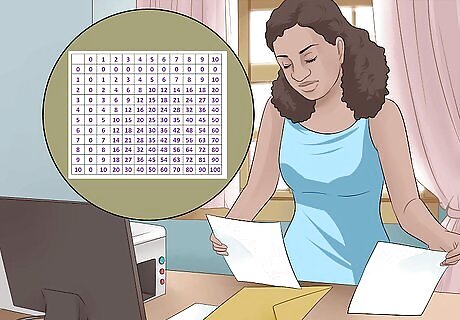
Print out tables. Third graders will have an easier time studying with tables. This presents all the information out in front of them at one time. In the beginning, let them work off this table in front of them. They can follow the columns and rows until they find their answers. Over time, this will likely lead them to memorization without them even really trying. It's up to you how many factors you want to present them with. A multiplication table up to 6 may be all you want to do right now. However, if you have a particularly bright group of kids, you may be able to get away with a chart that goes all the way up to 12.
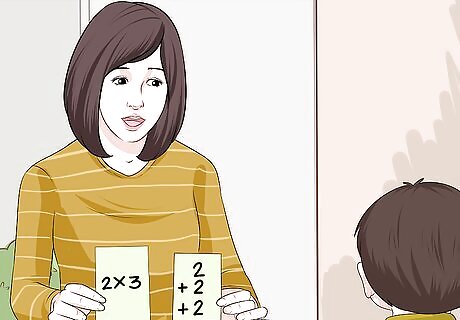
Explain to them multiplication is exactly like extended addition. Show them that 2x3 is the exact same thing as 2+2+2, or 3 groups of 2. This makes it less intimidating since they already know how to add. Emphasize that multiplication is a shortcut. For instance, write down five 2s and then add them together to get 10. Then show them 2 x 5 is really adding two five times. Usually when students learn that there's a short cut, they will take it. Let them use their multiplications tables at first. Then wean them from them gradually. The students who are more math-savvy will get bored quickly with these charts, so give them extra credit questions if necessary. The students who don't catch onto it as quickly will appreciate the crutch and appreciate that you care enough about them to help them through it.

Use visual and physical aids. In the UK, "Numicon," which shows the numbers from 1 to 10 in blocks with that number of holes, and Cuisenaire rods are popular. However, you can use just about anything that's small, even food. For example, if there are 3 cups and each cup has 4 pencils in it then there are a total of 12 pencils. Show the students that the number of pencils in each cup adds together to a total of the number of cups multiplied by the number of pencils that are contained within them. Illustrate the connection between the math that they have already learned and the math that they are being taught. EXPERT TIP Joseph Meyer Joseph Meyer Math Teacher Joseph Meyer is a High School Math Teacher based in Pittsburgh, Pennsylvania. He is an educator at City Charter High School, where he has been teaching for over 7 years. Joseph is also the founder of Sandbox Math, an online learning community dedicated to helping students succeed in Algebra. His site is set apart by its focus on fostering genuine comprehension through step-by-step understanding (instead of just getting the correct final answer), enabling learners to identify and overcome misunderstandings and confidently take on any test they face. He received his MA in Physics from Case Western Reserve University and his BA in Physics from Baldwin Wallace University. Joseph Meyer Joseph Meyer Math Teacher Explore multiplication learning tool options. Multiplication grids, pegboards, electronic boards, and tiles offer a hands-on, engaging way to practice multiplication. Unlike flashcards that show a single problem, these tools can display multiple problems at once, helping you identify patterns and fast-track memorization.
Teaching the Math

Start with 3. You should start with 3 because they have likely been learning 1s and 2s since first grade. However, if they need a kick to be shown how simple it is, consider backtracking to these numbers. That being said, there's not much to do with 1s. Get a feel for the group you're working with. What are they ready for? Start with 3 x 2. Place 3 beans in each of your two hands. Explain that 3 x 2 is the same as two groups of 3, or 3 + 3. How many beans are there? Now what if you had a student come up and hold beans with you in his or her right hand? How many beans would there be then? What would that equation be?
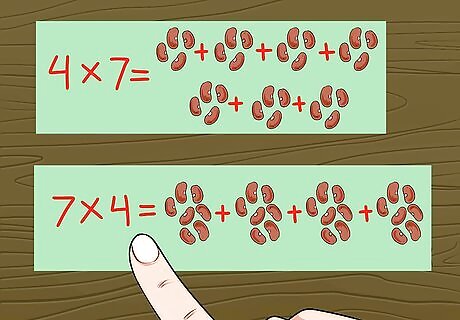
Move to 4, 5, 6, 7, and 8s. Once they have the basic concept, these numbers are essentially the same. It's a combination of math and addition skills and rote memorization. Continue using your blocks, beans, rods, or whatever other implement you're using to illustrate the groupings and numbers. Many teachers are fond of time tests. You could also turn this into a game creating teams, using flashcards, and having them race to the board. Make sure to work in both directions – i.e., 4 x 7 and 7 x 4.

Move to 9 and above, giving them tricks to help them remember. There are actually many tricks for nine. Tell them if they already know tens, they can do this. Here are two ideas: If 10+10 is twenty, subtract two from twenty, and you have eighteen! Let's try a higher equation, like 10 x 4 = 40. Subtract one group of 4 and you have 36, or 9 x 4. 10 x 5 is 50, but subtract one group of five and you have 45, or 9 x 5. Just subtract one group of the number that isn't ten and that's the answer for nine. Teach them a simple hand trick. First put up your ten fingers in front of you. Then take whichever number you need to multiply by nine and count that on your fingers. So if you are multiplying 9 x 7, you just count your ten fingers from left to right and when you get to your 7th finger, fold it down. Then you have your answer! You will then have 6 fingers to the left and 3 fingers on the right ( your folded down 7th finger separates the two different numbers). So with 6 fingers on the left and 3 on the right your answer is 63! This works with any number divided by 9 (just replace the 7 in this example with whichever number you're multiplying by 9). It's an easy trick to master for one of the hardest single numbers in multiplication to memorize.
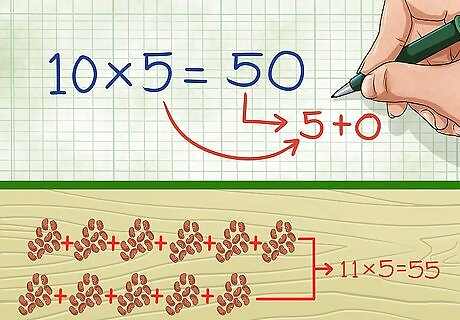
Move to 11 and 12, glossing over 10. Don't give much attention to 10, because they have likely been learning that or can see how simple it is – just add a zero. But when it comes to 11, remind them that if 10 x 5 is 50, then 11 times five is 55. 12 is where many teachers stop when it comes to basic multiplication learning. However, if you want to give them a challenge, keep going up through 20. It's fine if they slow down as the problems get harder and harder. But as they get harder and harder, make sure it stays fun.
Helping Children with Learning Difficulties

Teach more than one way to learn. The standard way to teach multiplication is memorization, which only some children are good at – and it's debatable if you can classify this as learning, anyway. Make it interactive as much as possible. Use fingers and toes, blocks, an abacus, whatever you have on hand. Make it fun, not something that's discouraging. Please do not shame kids by having them recite in front of the class – it will never improve their memory but it will turn them off math forever and create an unpleasant disparity among students.

For kids who have trouble with learning multiplication, try skip counting. With this method, students will need to know how to skip-count, which is essentially the same as multiplication. For example, skip-counting by multiples of 4 goes as follows: 4, 8,12, 16, 20, 24, 28, 32, 36, 40. 3 x 4 = skip-count by 4 three times: 4, 8, 12. A harder example? 6 x 7 = skip-count by 7 six times: 7, 14, 21, 28, 35, 42. The answer is 42. The best way to learn skip-counting is through the use of songs or other mnemonic devices. Skip-counting by multiples is also the primary method for multiplying single digits by remedial math systems such as Simple Math and Touch Math.
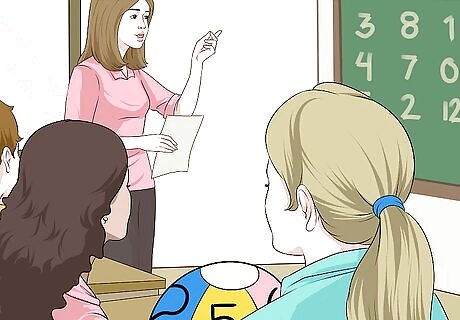
Turn it into a hands-on game. Here's an idea: use a beach ball (or two). Take a permanent black marker and divide the ball in half horizontally. This will give you 12 sections. Using the same marker, number the sections from 0 through 11 randomly. Here's how the game is played: You write a number 1 through 10 on the board (preferably the number you are working on in the classroom.) Any child in the room tosses the ball to another child. This child instantly calls out the number their right thumb is on. Both children compete in trying to be the first to say the answer, multiplying the number on the board by the number called out by the child who caught the ball. The winner continues the game by throwing the ball to another child. Have the child who throws the ball say the name of the child that they are tossing it to. This eliminates a mad scramble for many to rush to catch the ball. Pro tip? Let some air out of the ball. It is easier for third graders to catch and it doesn't cause chaos by bouncing all over the room.
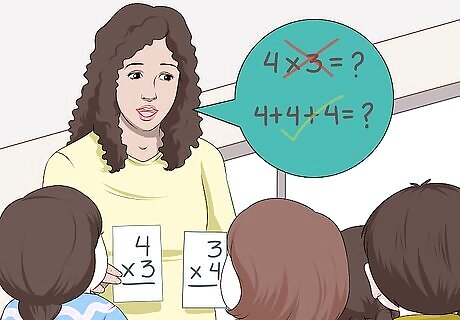
Change how you word the problem. Instead of saying "four times three is...?" try saying, "four, three times is...?" Try pointing out that the multiplication process is taking a number and re adding it the number of times your multiplying it by. You are just saying it in a way kids would understand more easily. Once they have a grip on it, change up how you say the problem, and what problems you ask them. Make it random and not following a pattern. Kids are like sponges when it comes to learning if you make it interesting. EXPERT TIP Joseph Meyer Joseph Meyer Math Teacher Joseph Meyer is a High School Math Teacher based in Pittsburgh, Pennsylvania. He is an educator at City Charter High School, where he has been teaching for over 7 years. Joseph is also the founder of Sandbox Math, an online learning community dedicated to helping students succeed in Algebra. His site is set apart by its focus on fostering genuine comprehension through step-by-step understanding (instead of just getting the correct final answer), enabling learners to identify and overcome misunderstandings and confidently take on any test they face. He received his MA in Physics from Case Western Reserve University and his BA in Physics from Baldwin Wallace University. Joseph Meyer Joseph Meyer Math Teacher Frame multiplication in a way that excites students. By teaching multiplication as a faster way to tackle familiar addition problems, students will discover how powerful it can be to solve various math problems quickly. This way, multiplication becomes a tool they like using, not just numbers to memorize.


















Comments
0 comment